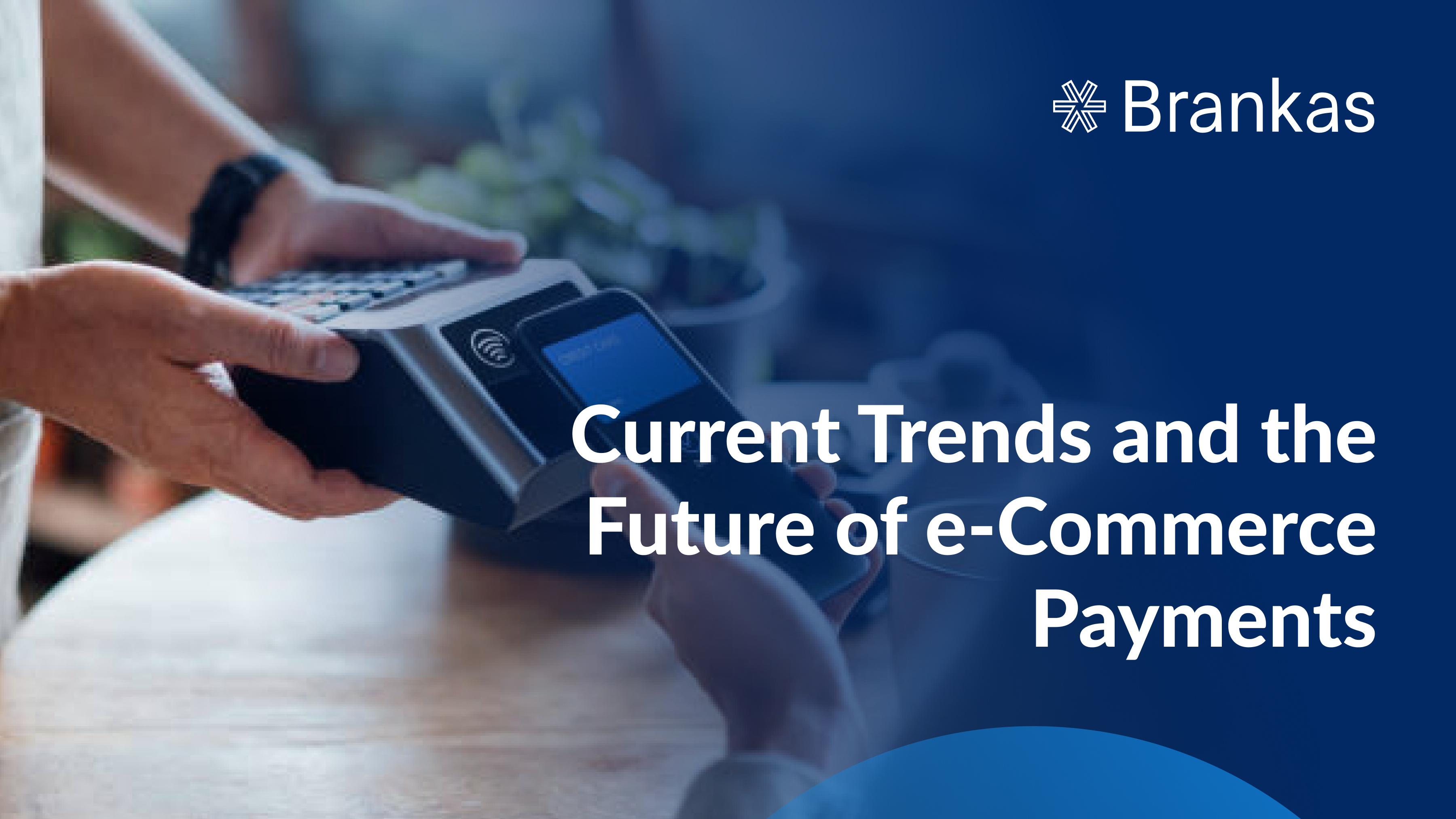In the last few years, there’s no denying that e-commerce has taken the world by storm. The global e-commerce market is projected to reach $4.8 trillion in 2025, showing that e-commerce is becoming a lucrative option for online retailers and merchants.
The question is, what keeps this digital revolution going? As the market continues to expand, so does the complexity and variety of payment methods available. E-commerce payments power these transactions and connect merchants and customers no matter where they are across the globe.
Read on as we examine the current state of e-commerce payments and the opportunities for merchants to stay competitive by utilizing state-of-the-art payment solutions from Brankas.
What are E-Commerce Payments?
As technology continues to evolve, so too will consumer expectations and behaviors. Convenience and accessibility are no longer luxuries but necessities. Enter e-commerce payments.
E-commerce payments refer to any financial transaction that occurs between a buyer and a seller in an online environment. These transactions typically involve the transfer of funds from the buyer’s account to the seller’s account through various digital payment methods. Unlike traditional payment methods, e-commerce payment systems are optimized for speed, convenience, and safety.
The Introduction of SSL
But how did e-commerce payments come about? It all started with the Secure Sockets Layer (SSL). The 1990s marked a pivotal shift for e-commerce. The introduction of SSL encryption in 1994 paved the way for the launch of Amazon and eBay. Amazon started as an online bookstore and quickly expanded its product offerings, while eBay introduced auction-style selling, revolutionizing how consumers could buy and sell goods online. In 1998, PayPal emerged as a secure e-commerce payment system that propelled the growth of online transactions as we know them today.
Meanwhile, e-commerce did not progress as quickly in Asia as it did in North America. Although Jack Ma founded Alibaba in 1999, it primarily served business-to-business (B2B) clients. Over time, internet connectivity improved, and social media sites and instant messaging platforms became very popular. The Philippines has seen a rapid increase in internet activity and mobile device usage.
All this would not have been possible without SSL. SSL encrypts data transmitted between a user’s browser and an e-commerce website. This ensures that sensitive information such as credit card details, personal identification, and passwords are protected from unauthorized access. SSL certificates also confirm the authenticity of business websites, giving consumers peace of mind that they are interacting with legitimate businesses.
These innovations laid the groundwork for a new era in retail and the growth of e-commerce. Major e-commerce platforms like Lazada and Shopee have emerged as dominant players in the market. The COVID-19 pandemic further accelerated the adoption of e-commerce as more consumers relied on online shopping, and user penetration is expected to hit 31.9% by 2029.
The e-Commerce Payment System
How do e-commerce payments work? Key players that facilitate financial transactions online include:
• Payment Gateways: This is a technology that securely captures and encrypts customer payment information. Platforms include Stripe and PayPal.
• Digital Wallets: These are apps like Google Pay, Apple Pay, and GrabPay that allow users to store card details and pay effortlessly.
• Payment Processor: This entity handles the verification of payment details and the transfer of funds from a customer’s bank to the merchant’s account.
• Direct Bank Transfers: These include transactions directly between bank accounts.
E-Commerce Payment Trends Now
Today’s e-commerce payments are more dynamic than ever. Here are current e-commerce payment trends shaping the way merchants do business:
• Digital Wallets are the Norm
E-commerce digital payments in Asia are surpassing cash and are expected to account for 66% of in-store purchases by 2027. Google Pay, Apple Pay, GCash, Maya, and other digital wallets are now common payment methods in commercial establishments. As a merchant, you need to provide customers with different payment options so they can have a more positive shopping experience.
• On a Tight Budget? Buy Now, Pay Later (BNPL)
The buy-now-pay-later payment option allows consumers to split their purchases into smaller installments. BNPL has gained traction because it offers flexibility for those who cannot pay the full amount upfront. The terms of these loans vary, with some including interest and others dividing the payment into multiple interest-free installments.
• QR Codes are Here to Stay
QR codes for digital payments have become widely accepted, and they are not going anywhere anytime soon. Businesses also use QR codes or scannable images to provide information about a product, guide diners to a menu, display a portfolio, or redirect to a form.
• Skip the Credit Card
While credit cards offer convenience and security, they typically have higher processing fees. Younger consumers are also less likely to use credit cards and prefer alternative e-commerce payment options, including pay by bank. This method allows consumers to directly transfer money from their bank accounts to merchants without using credit or debit cards.
• Biometrics as Extra Layer of Security
Biometrics enhance security and user experience as it utilizes physical traits like fingerprints and facial recognition to authorize payments instead of passwords or PIN codes. This gives consumers peace of mind since biometric data is more difficult to replicate or tamper with. This kind of payment verification is also ideal for consumers hesitant about giving out their personal information online.
• Social Commerce
Imagine scrolling through TikTok, finding something you want, and buying the item—all within the app. That’s exactly the type of experience social commerce provides. More merchants are leveraging the features of social media for retail. Social media platforms are now digital storefronts where customers can place an order and make payments without leaving the app.
• Subscriptions
For many merchants, subscriptions are a profitable and attractive business model as they provide a constant revenue stream and build customer loyalty. From streaming services and monthly perfume samples to meal prep and exclusive content, subscriptions have become a popular option for consumers who want to maintain a certain lifestyle. These subscriptions require reliable e-commerce payment options to keep the service going.

What’s Next for e-Commerce Payments
As we look to the future, here’s what to expect for e-commerce payments:
1. Cryptocurrency
Cryptocurrency is a digital currency without a centralized regulating authority, so it’s only natural that governments and merchants have doubts about using it as digital payment. Despite this, there are still some organizations pushing for cryptocurrencies to become acceptable forms of payment, especially for niche markets and luxury goods.
2. Open Banking
Open banking is gaining ground as it offers greater transparency and lower processing fees. It enables a more seamless and efficient checkout process because customers can pay directly from their bank accounts without having to input card details.
3. Cross-Border Payments
Advancements in logistics and supply chain technology will improve the efficiency of cross-border e-commerce transactions, reducing delivery times. This makes online shopping more convenient for consumers. Additionally, the continued rise of digital payment methods will further streamline transactions. For example, the impact of digital payments in the UAE has made it easier for small businesses to focus on sales abroad.
4. AI-Powered Fraud Detection and Prevention
As with most modern technologies, one of the biggest challenges facing e-commerce is security. Online payment methods may require processing sensitive personal and financial data of customers, which is why it’s crucial to protect them against fraud and identity theft.
Top Concerns of Merchants and B2B Clients
As a merchant or B2B entity, how do these trends affect you and your operations? The following are the common pain points you likely have:
Payment Security
It’s your responsibility to protect customer data from fraud and unauthorized access. You need to implement robust security measures such as SSL encryption, two-factor authentication (2FA), and more to safeguard all payment transactions.
Regulatory Compliance
Non-compliance can lead to severe legal and financial repercussions, including fines and reputational damage.
Customer Trust
If customers think your payment process is compromised, they may abandon their carts or avoid your site or app altogether. Creating a secure environment instills confidence and encourages repeat business.
Payment Processing Costs
E-commerce transactions often incur higher processing costs than traditional methods, so it’s essential to choose cost-effective payment solutions that suit your business model.
Keep up with e-Commerce Payment Trends
As e-commerce continues to evolve, merchants must stay ahead of these trends to remain competitive. Businesses that embrace these changes not only streamline their transactions but also improve the overall customer experience.
With Brankas, you can remain at the forefront of modern e-commerce and set your business up for success. We offer innovative open finance solutions that empower businesses to navigate the complexities of payment systems. Contact us or try Brankas for free today.
